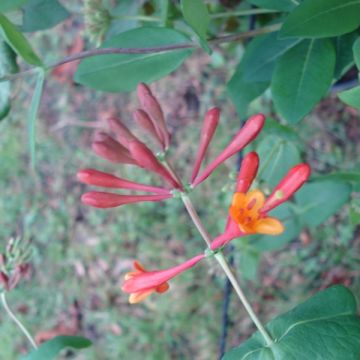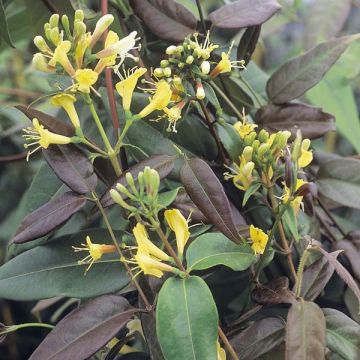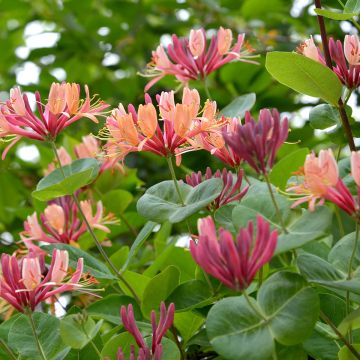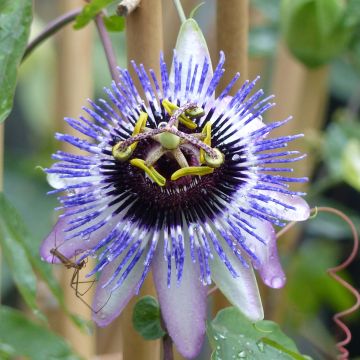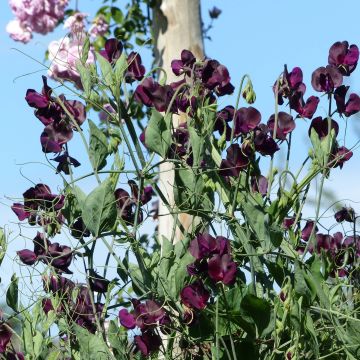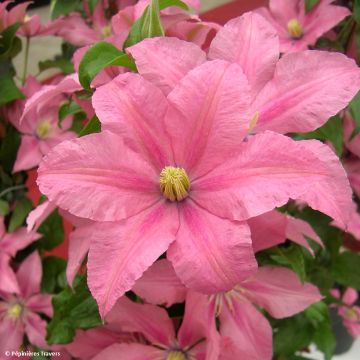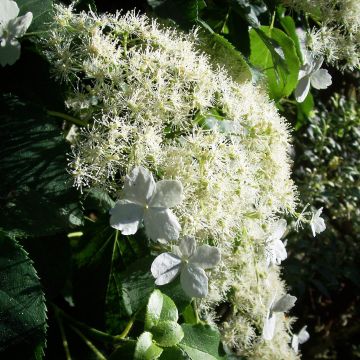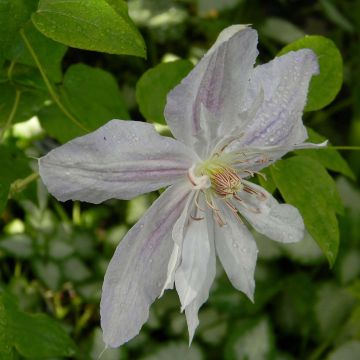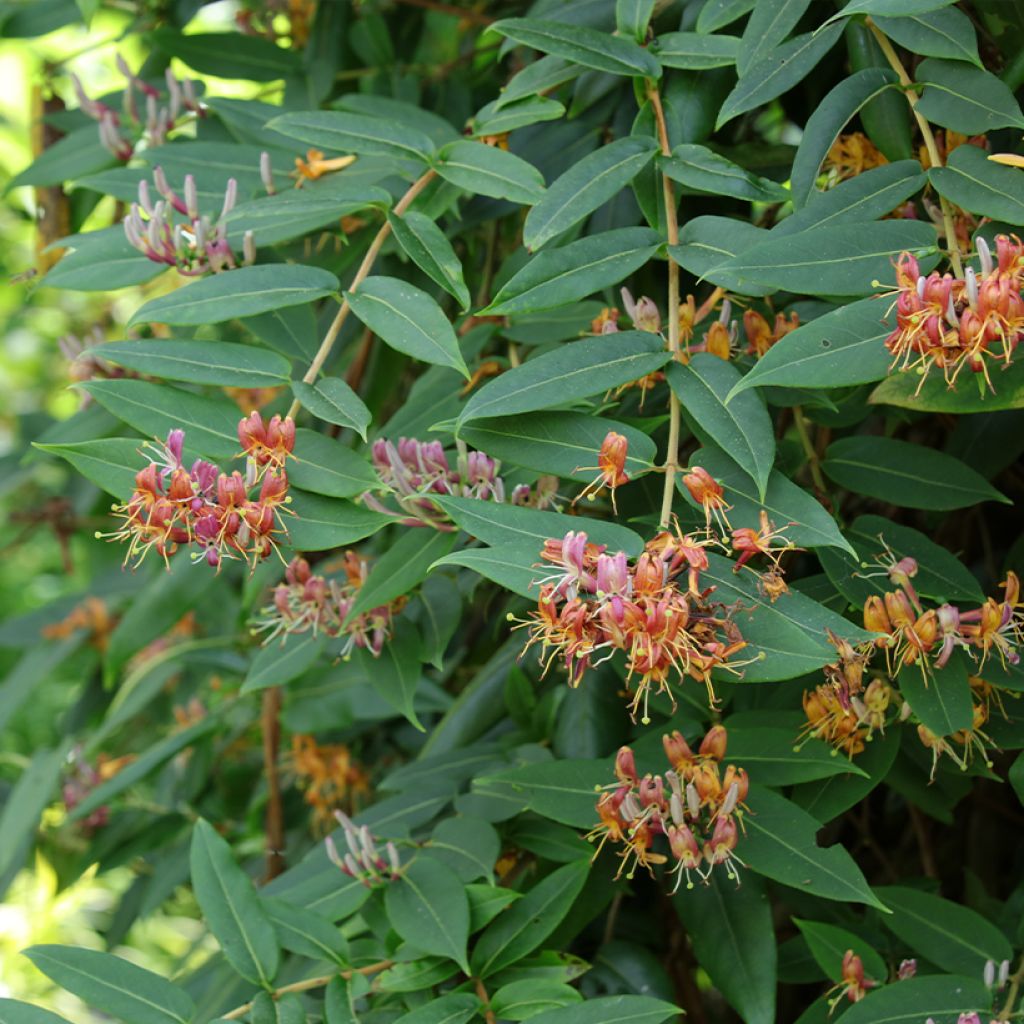

Lonicera henryi


Lonicera henryi


Lonicera henryi


Lonicera henryi
Lonicera henryi
Lonicera henryi
Henry's honeysuckle
This item cannot be shipped to the selected country
Delivery charge from €5.90
Delivery charge from €5.90
Delivery to Corse prohibited
More information
Schedule delivery date,
and select date in basket
This plant carries a 6 months recovery warranty
More information
We guarantee the quality of our plants for a full growing cycle, and will replace at our expense any plant that fails to recover under normal climatic and planting conditions.
From €5.90 for pickup delivery and €6.90 for home delivery
Express home delivery from €8.90.
From €5.90 for pickup delivery and €6.90 for home delivery
Express home delivery from €8.90.
Delivery to Corse prohibited: UE law prohibits the import of this plant from mainland France to Corse as part of the fight against Xylella fastidiosa. Please accept our sincere apologies.
More information

Does this plant fit my garden?
Set up your Plantfit profile →
Description
The Lonicera henryi, also known as Henry's Honeysuckle, is a truly evergreen honeysuckle with dense foliage that remains elegant throughout the year. This vigorous climbing plant, however, has a relatively moderate growth. It wraps its long stems around tree branches and the mesh of a fence, quickly concealing them and adorning them with clusters of slightly fragrant and brightly coloured tubular flowers in late spring and early summer. This botanical honeysuckle, curiously not widely planted in our gardens, was recognized at Courson for its real ornamental qualities and ease of cultivation.
Henry's Honeysuckle is a plant from the Caprifoliaceae family, native to China and Tibet. In the wild, this plant shows vigorous growth, making it suitable for slightly wild open spaces. In our climates, depending on the growing conditions, it rarely exceeds 5m (16ft) in height and 3m (10ft) in width. In spring, its bronze-coloured young shoots give way to 10cm (4in) long, entire, leathery and evergreen oval-lanceolate leaves with a medium green colour, smooth and shiny in appearance. This foliage withstands inclement weather, but sometimes curls slightly under the cold. Flowering occurs from June to July, in the axils of the leaves and at the ends of the branches, in the form of cymes. The slim trumpet-shaped flowers are yellow to ochre and tinted with pink-purple, releasing white and prominent stamens. This fragrant, nectar-rich and honey-producing flowering is followed by the formation of small fleshy black-purple berries, toxic to humans but highly appreciated by birds.
This superb Henry's Honeysuckle can be planted directly in the ground, in any exposure as long as the base remains shaded. Truly evergreen, robust and adaptable, it is perfect for covering a fence mesh or filling out a hedge, even in winter. It forms a beautiful combination with clematis, for example on a trellis, wrapping its voluble stems around the support provided. It will delight you with its fragrance on the terrace or near an opening (window, entrance), even in shady areas. It can also be planted in a hedge, alongside flowering shrubs such as lilacs, mock oranges, deutzias, or arbustive ceanothus.
Report an error about the product description
Lonicera henryi in pictures
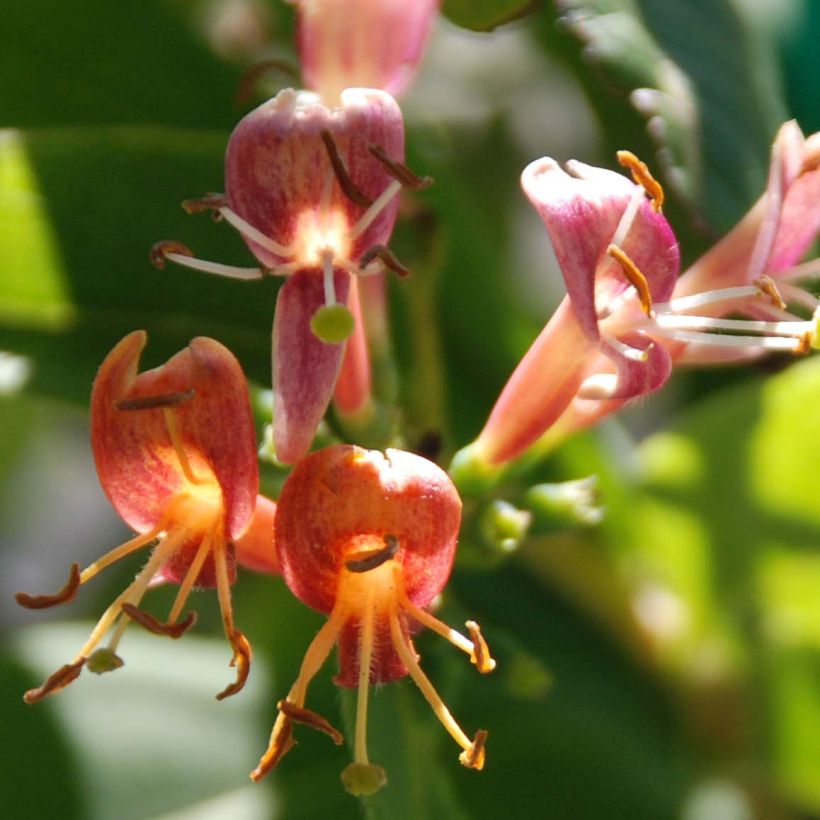





Plant habit
Flowering
Foliage
Botanical data
Lonicera
henryi
Caprifoliaceae
Henry's honeysuckle
China
Other Honeysuckle
Planting and care
Install Lonicera henryi in a rather moist soil, with the base in the shade and the top in the sun to promote flowering and the scent of the flowers, even though this plant can adapt to all exposures. Take care when planting, and water regularly in very dry weather. Honeysuckles thrive in good deep garden soil, with little to no surface limestone. They are hardy climbing plants, ideal for quickly covering a wall or a pergola. Provide them with support, they will cling on by themselves. We love them for their vigor, long flowering period, and wonderful fragrance. Our advice: Plant it near your terrace to fully enjoy its intoxicating scent, which becomes stronger in the morning and evening. Aphid attacks may occur; in case of a massive attack, spray in the evening with a natural insecticidal spray based on pyrethrin. Please note that the translation of the plant names and terms in the glossary may vary depending on the specific terminology used in British English.
Planting period
Intended location
Care
-
, onOrder confirmed
Reply from on Promesse de fleurs
Summer flowering climbers
Haven't found what you were looking for?
Hardiness is the lowest winter temperature a plant can endure without suffering serious damage or even dying. However, hardiness is affected by location (a sheltered area, such as a patio), protection (winter cover) and soil type (hardiness is improved by well-drained soil).

Photo Sharing Terms & Conditions
In order to encourage gardeners to interact and share their experiences, Promesse de fleurs offers various media enabling content to be uploaded onto its Site - in particular via the ‘Photo sharing’ module.
The User agrees to refrain from:
- Posting any content that is illegal, prejudicial, insulting, racist, inciteful to hatred, revisionist, contrary to public decency, that infringes on privacy or on the privacy rights of third parties, in particular the publicity rights of persons and goods, intellectual property rights, or the right to privacy.
- Submitting content on behalf of a third party;
- Impersonate the identity of a third party and/or publish any personal information about a third party;
In general, the User undertakes to refrain from any unethical behaviour.
All Content (in particular text, comments, files, images, photos, videos, creative works, etc.), which may be subject to property or intellectual property rights, image or other private rights, shall remain the property of the User, subject to the limited rights granted by the terms of the licence granted by Promesse de fleurs as stated below. Users are at liberty to publish or not to publish such Content on the Site, notably via the ‘Photo Sharing’ facility, and accept that this Content shall be made public and freely accessible, notably on the Internet.
Users further acknowledge, undertake to have ,and guarantee that they hold all necessary rights and permissions to publish such material on the Site, in particular with regard to the legislation in force pertaining to any privacy, property, intellectual property, image, or contractual rights, or rights of any other nature. By publishing such Content on the Site, Users acknowledge accepting full liability as publishers of the Content within the meaning of the law, and grant Promesse de fleurs, free of charge, an inclusive, worldwide licence for the said Content for the entire duration of its publication, including all reproduction, representation, up/downloading, displaying, performing, transmission, and storage rights.
Users also grant permission for their name to be linked to the Content and accept that this link may not always be made available.
By engaging in posting material, Users consent to their Content becoming automatically accessible on the Internet, in particular on other sites and/or blogs and/or web pages of the Promesse de fleurs site, including in particular social pages and the Promesse de fleurs catalogue.
Users may secure the removal of entrusted content free of charge by issuing a simple request via our contact form.
The flowering period indicated on our website applies to countries and regions located in USDA zone 8 (France, the United Kingdom, Ireland, the Netherlands, etc.)
It will vary according to where you live:
- In zones 9 to 10 (Italy, Spain, Greece, etc.), flowering will occur about 2 to 4 weeks earlier.
- In zones 6 to 7 (Germany, Poland, Slovenia, and lower mountainous regions), flowering will be delayed by 2 to 3 weeks.
- In zone 5 (Central Europe, Scandinavia), blooming will be delayed by 3 to 5 weeks.
In temperate climates, pruning of spring-flowering shrubs (forsythia, spireas, etc.) should be done just after flowering.
Pruning of summer-flowering shrubs (Indian Lilac, Perovskia, etc.) can be done in winter or spring.
In cold regions as well as with frost-sensitive plants, avoid pruning too early when severe frosts may still occur.
The planting period indicated on our website applies to countries and regions located in USDA zone 8 (France, United Kingdom, Ireland, Netherlands).
It will vary according to where you live:
- In Mediterranean zones (Marseille, Madrid, Milan, etc.), autumn and winter are the best planting periods.
- In continental zones (Strasbourg, Munich, Vienna, etc.), delay planting by 2 to 3 weeks in spring and bring it forward by 2 to 4 weeks in autumn.
- In mountainous regions (the Alps, Pyrenees, Carpathians, etc.), it is best to plant in late spring (May-June) or late summer (August-September).
The harvesting period indicated on our website applies to countries and regions in USDA zone 8 (France, England, Ireland, the Netherlands).
In colder areas (Scandinavia, Poland, Austria...) fruit and vegetable harvests are likely to be delayed by 3-4 weeks.
In warmer areas (Italy, Spain, Greece, etc.), harvesting will probably take place earlier, depending on weather conditions.
The sowing periods indicated on our website apply to countries and regions within USDA Zone 8 (France, UK, Ireland, Netherlands).
In colder areas (Scandinavia, Poland, Austria...), delay any outdoor sowing by 3-4 weeks, or sow under glass.
In warmer climes (Italy, Spain, Greece, etc.), bring outdoor sowing forward by a few weeks.

































